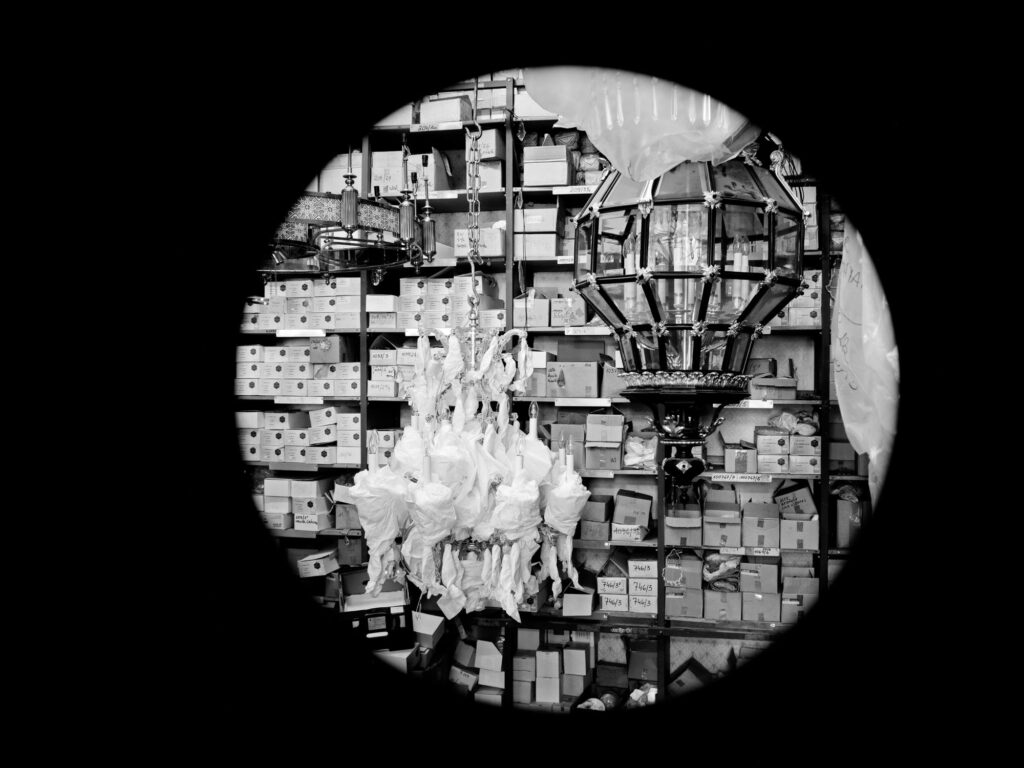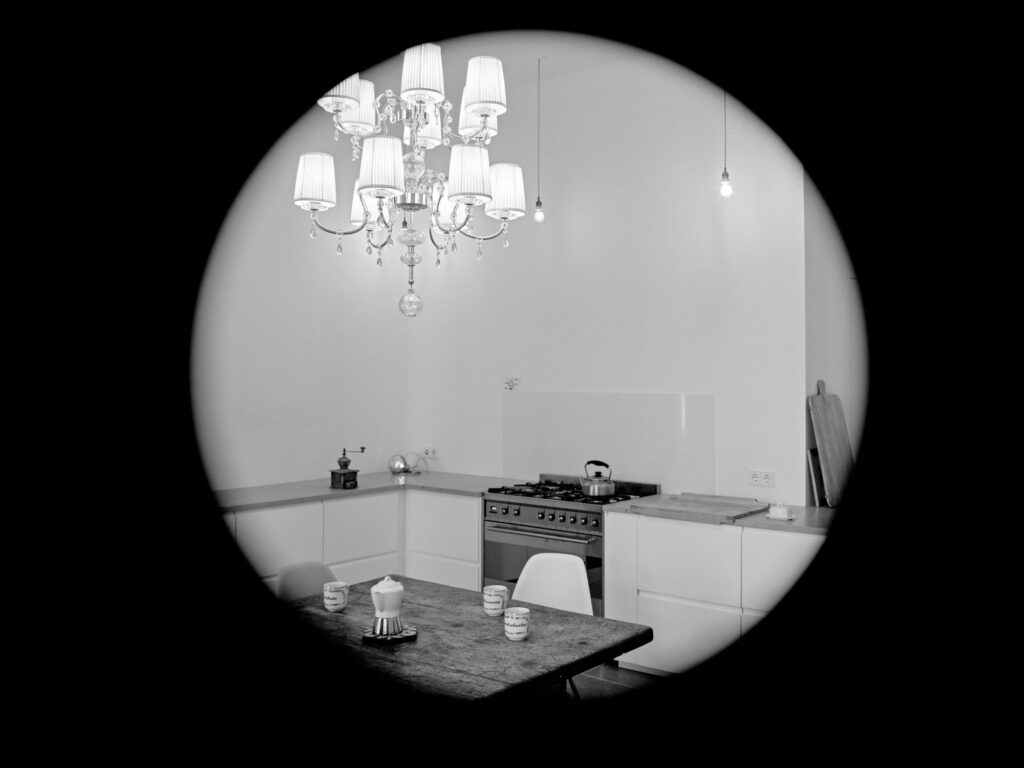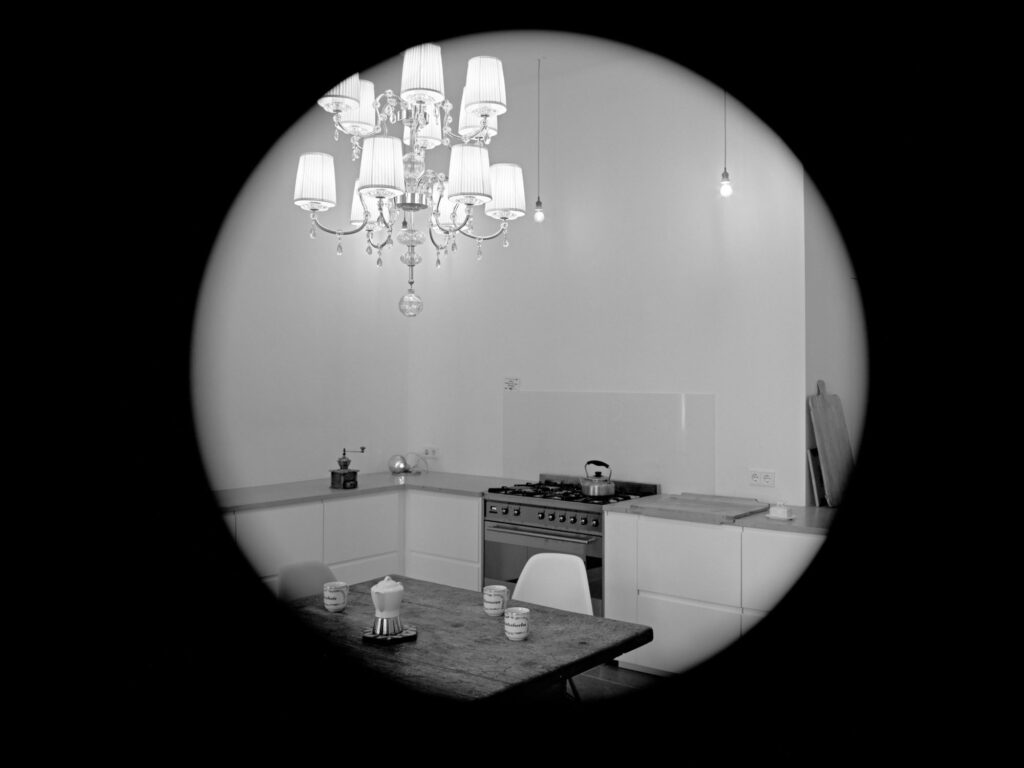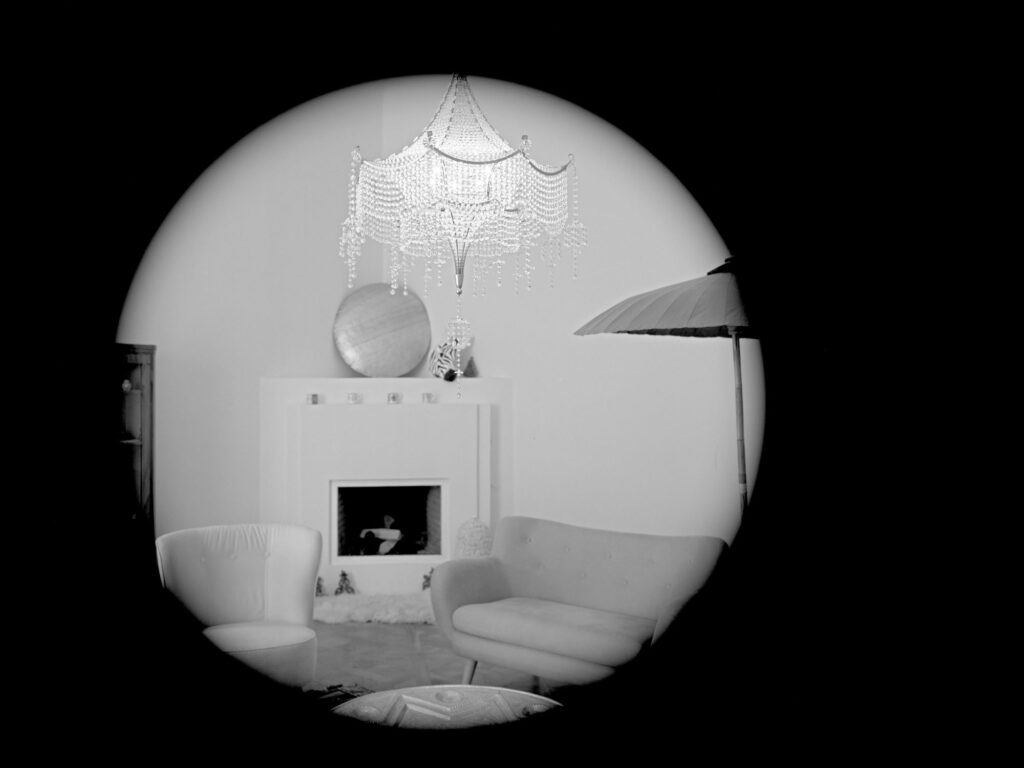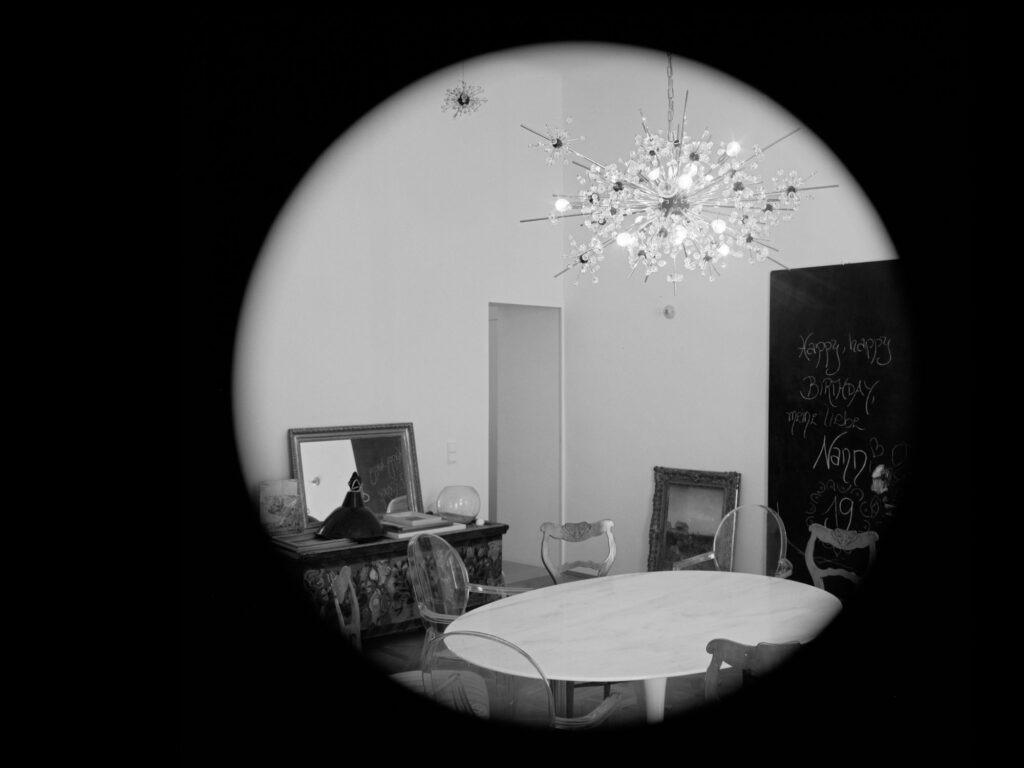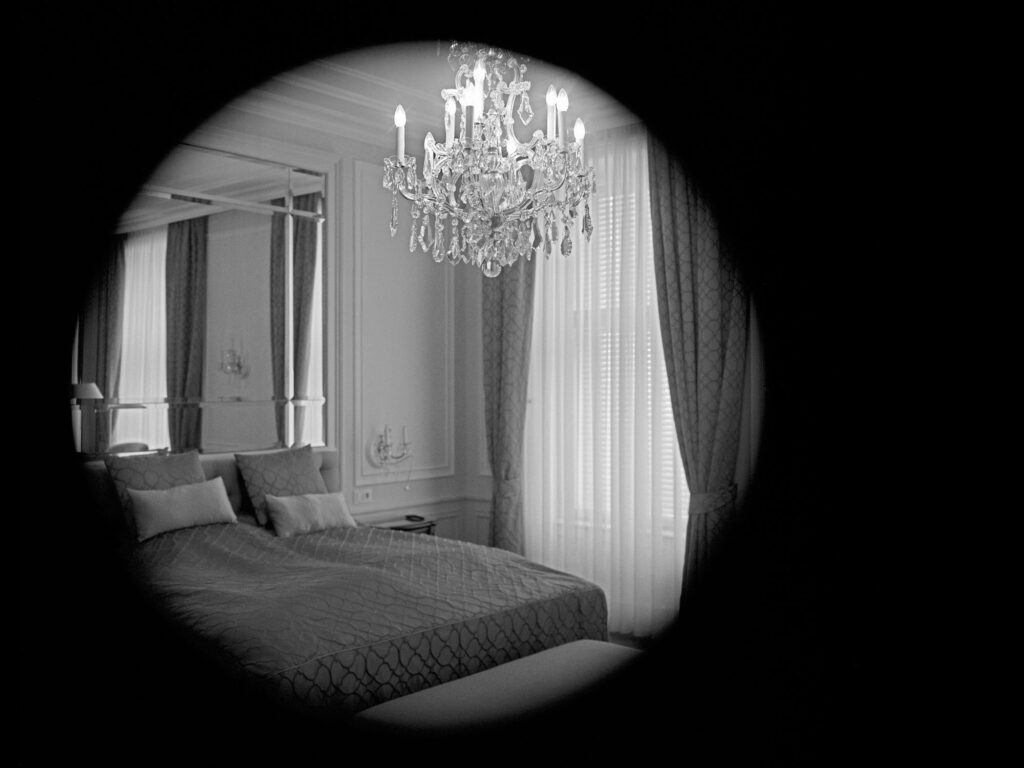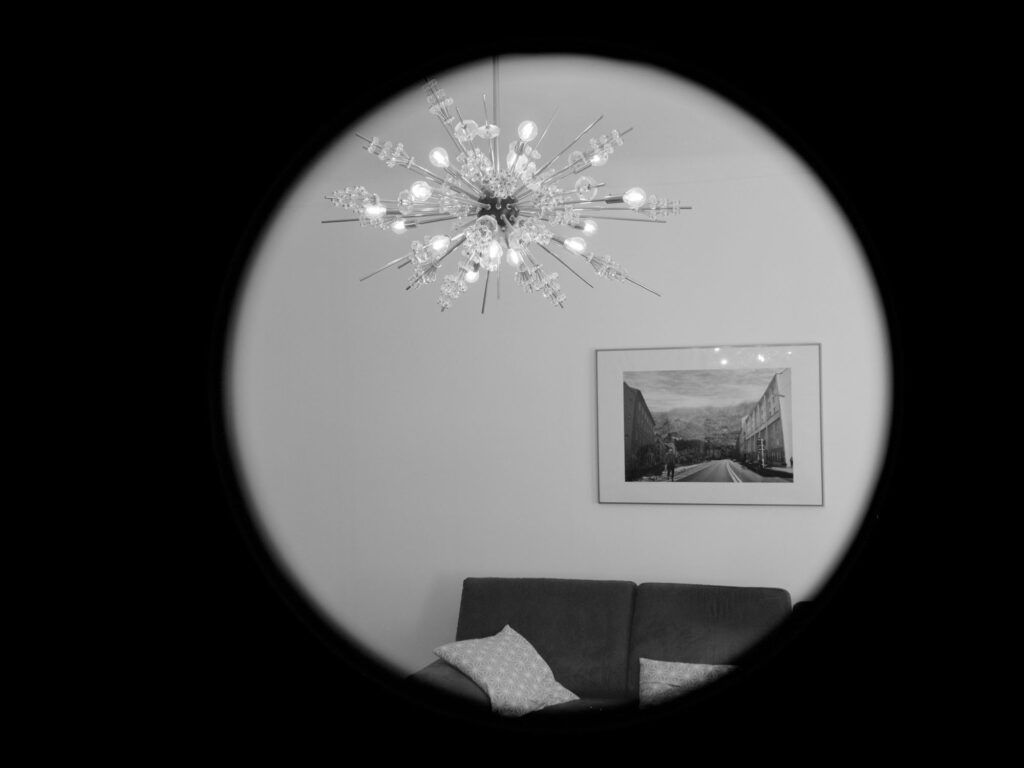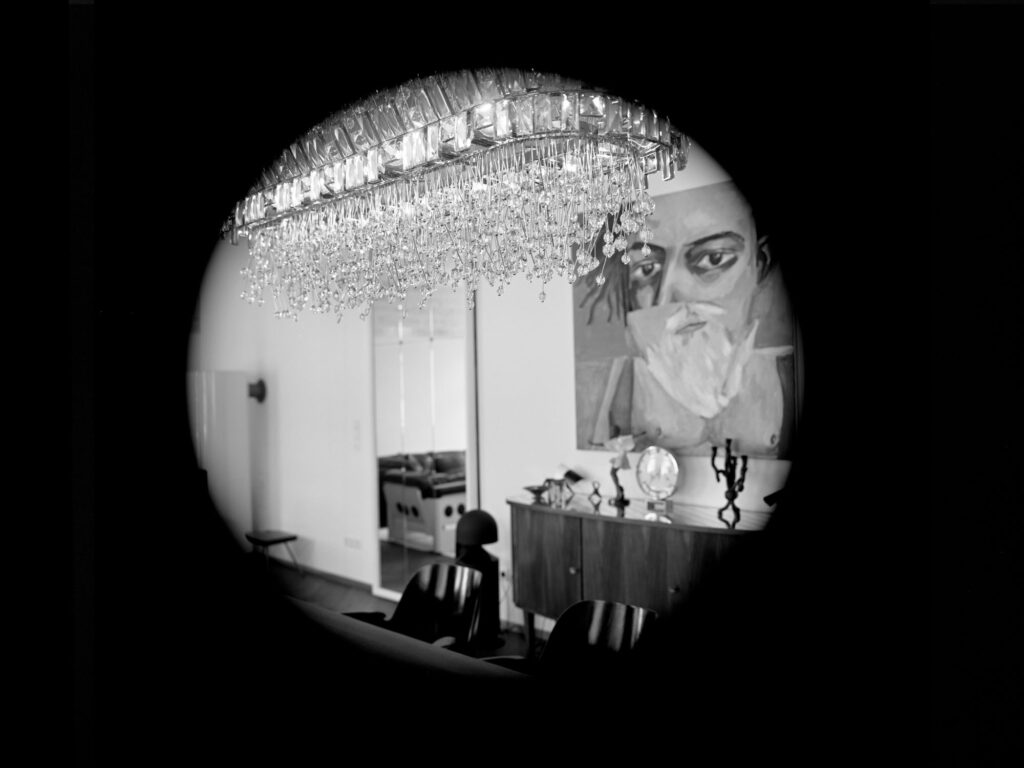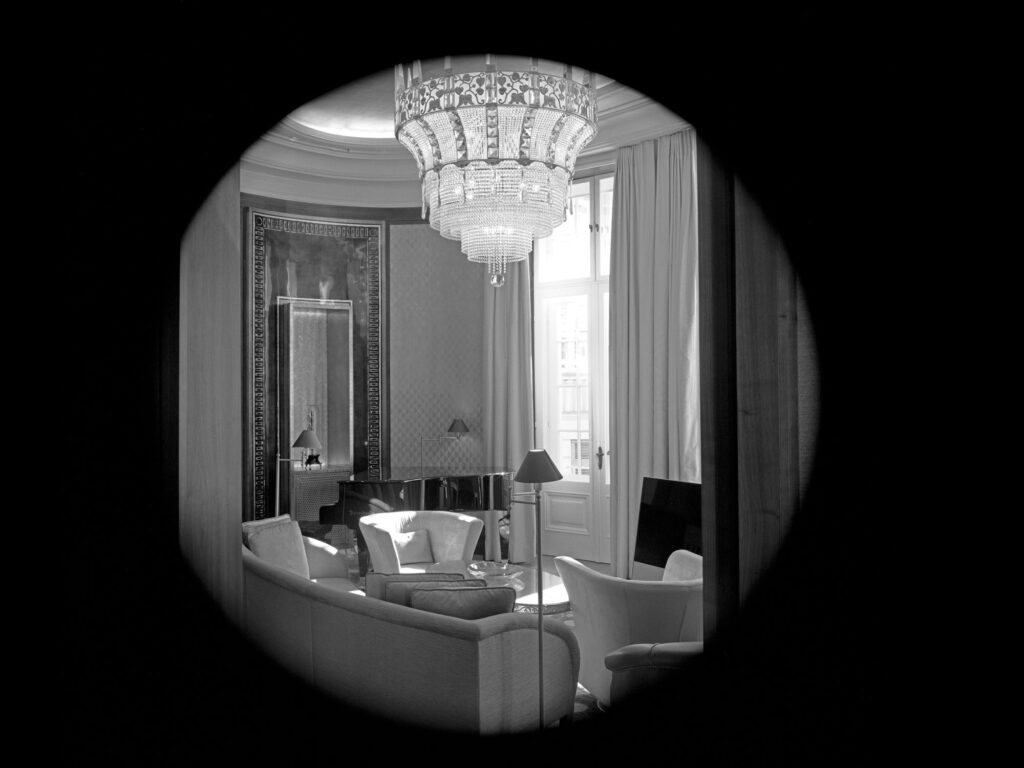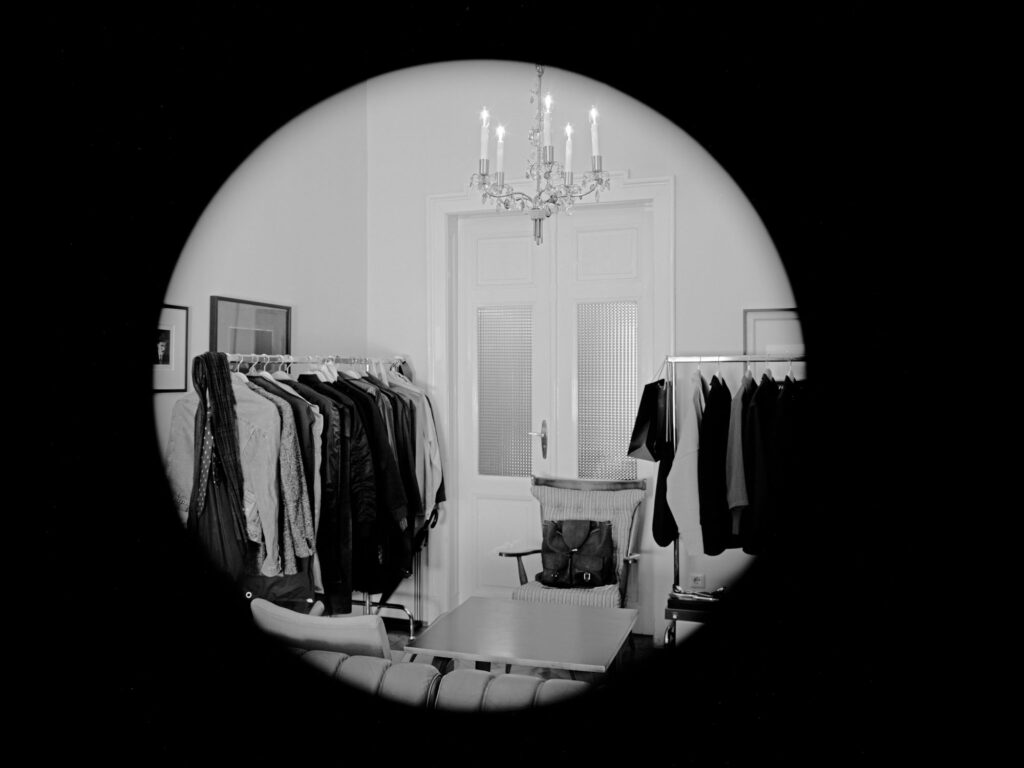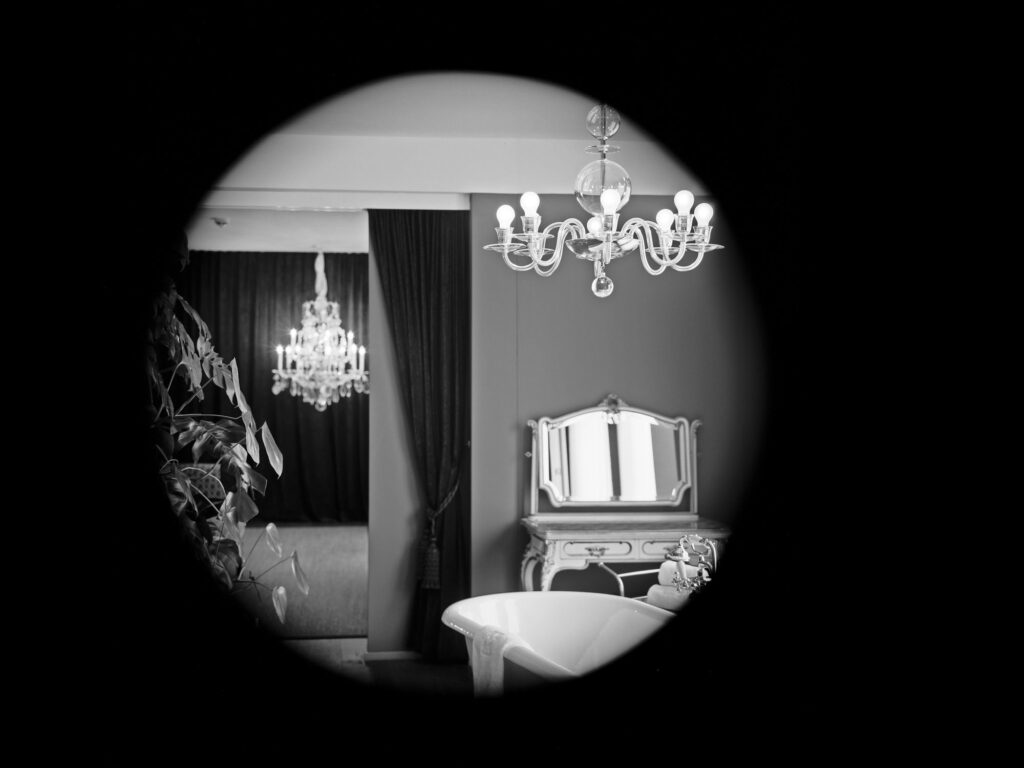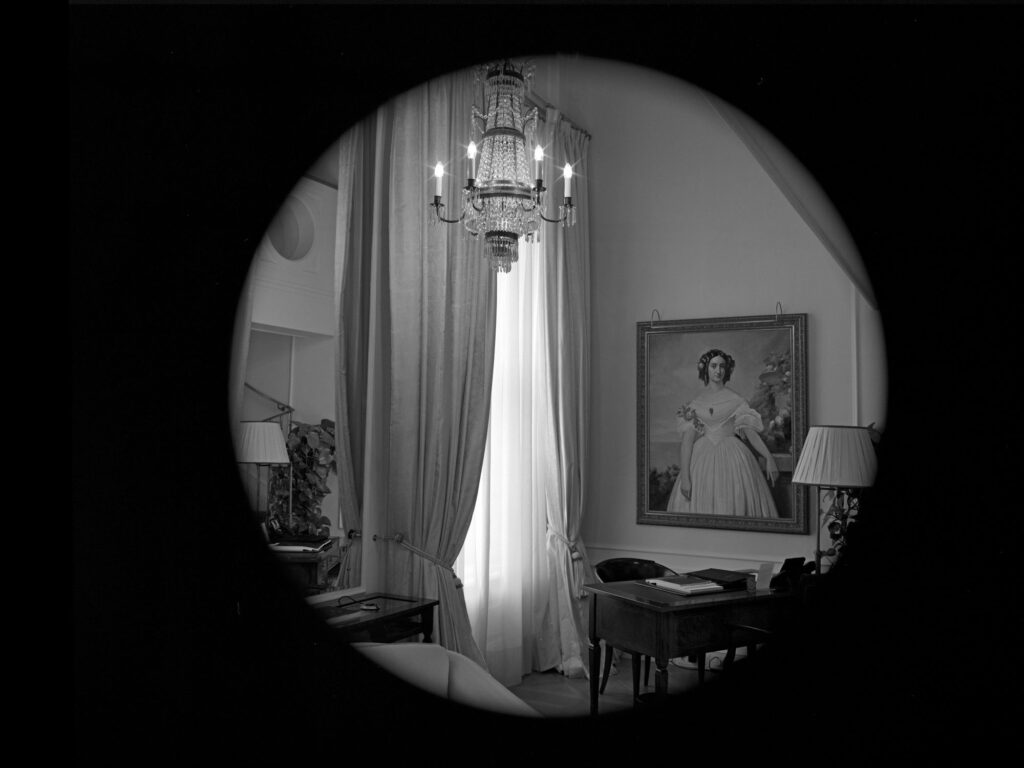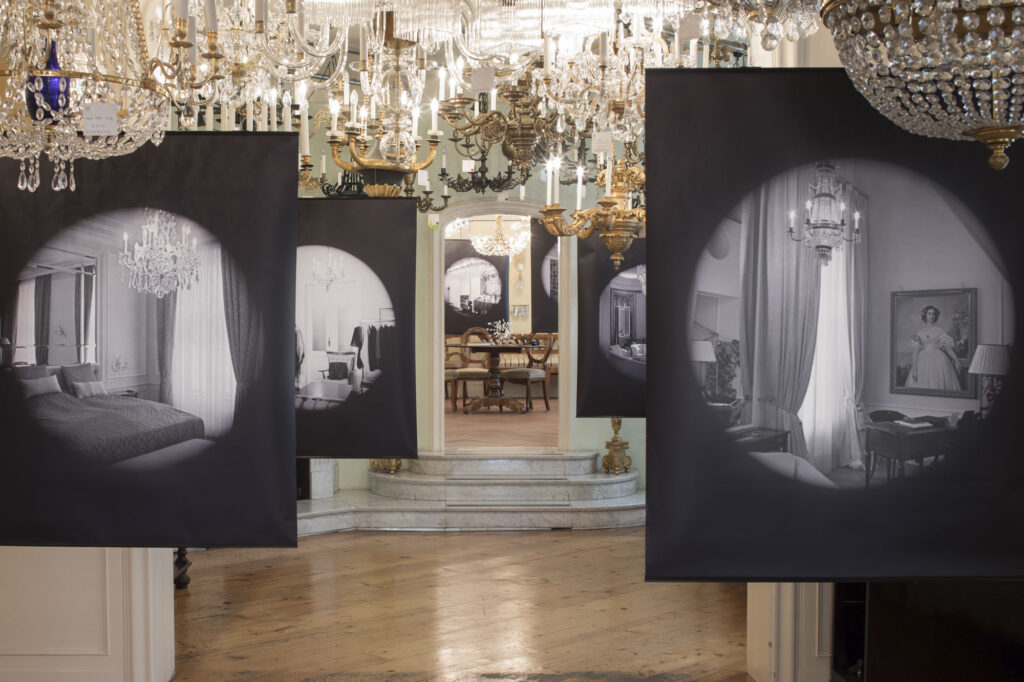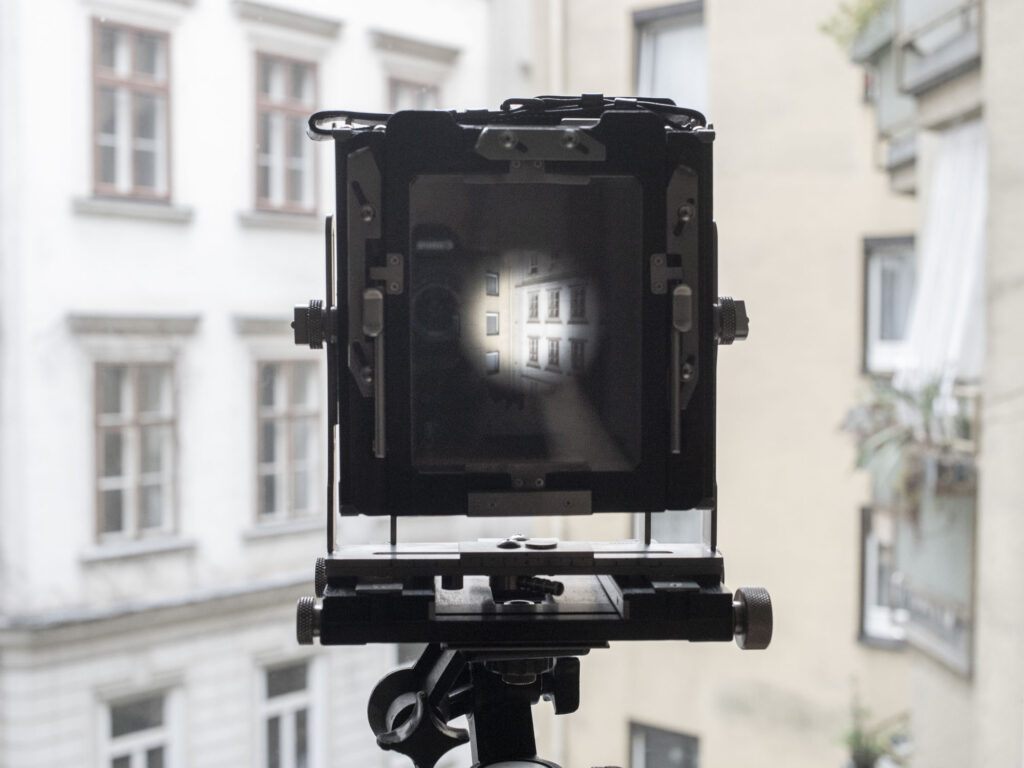
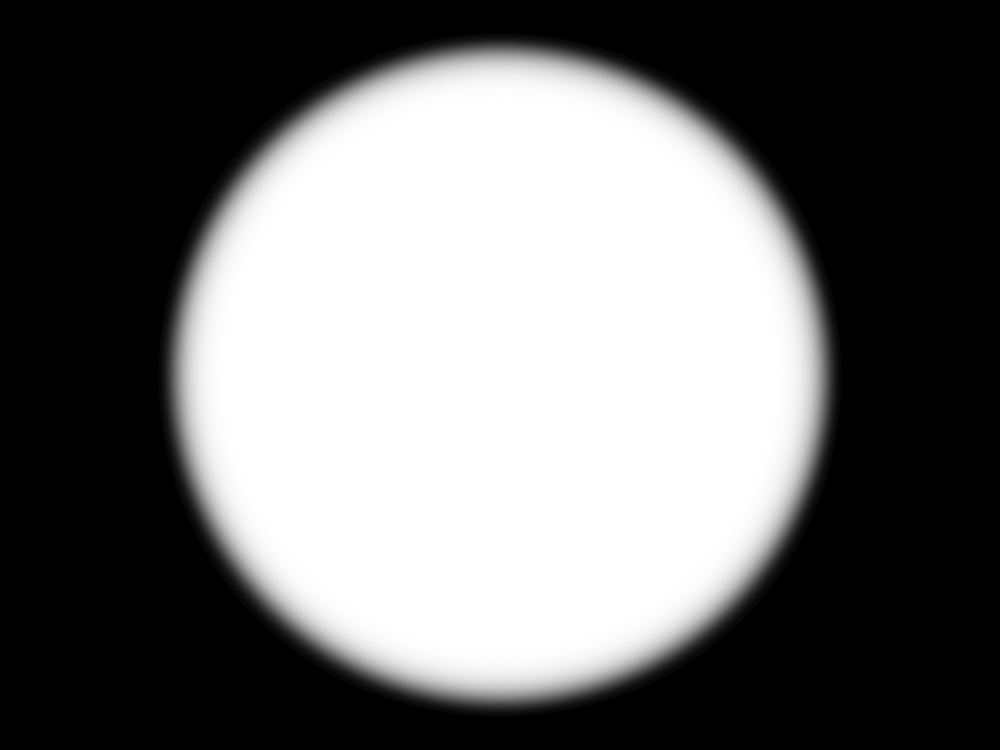

Die Linse des Objektives bildet einen Kreis, aus dem üblicherweise ein Rechteck, der Ausschnitt gewählt wird. Um Vignettierung zu vermeiden muss der Kreis größer als der Ausschnitt sein. Hier ist es genau umgekehrt: der gesamte Kreis – der Bildkreis – wird auf einem Blatt Film (Großformat) aufgenommen. Was als Begrenzung bzw. Vignettierung erscheint ist als Erweiterung gedacht, als analoges RAW-Format – unbeschnitten. Es ist also ein Spiel – den Spiess umdrehen – das zu diesen Fotografien führt
The lens element of the lens forms a circle from which a rectangle, the crop, is usually selected. To avoid vignetting, the circle must be larger than the section. Here it is the other way round: the entire circle – the image circle – is photographed on a sheet of film (large format). What appears as a limitation or vignetting is intended as an extension, as an analogue RAW format – uncropped. So it’s a game – turning the tables – that leads to these photographs
Begonnen hat es als Spiel, als Experiment, geht das überhaupt? Mit welcher Linse? Welches Objektiv hat einen geigneten grossen Kreis um auf ein 4×5 inch zu passen. Es war nicht leicht und schlussendlich viel die Wahl auf Nikkon Kleinbild objektive, diese haben meist einen 8-10 cm grossen Kreis, der Film ist 10×15 cm groß. Verwendet werde 50, 80 und 135mm – die Klassiker.
It started as a game, as an experiment, is that even possible? With which lens? Which lens has a suitable large circle to fit on a 4×5 inch. It was not easy and in the end the choice fell on Nikkon 35mm lenses, these usually have an 8-10 cm circle, the film is 10×15 cm. I used 50, 80 and 135mm – the classics.
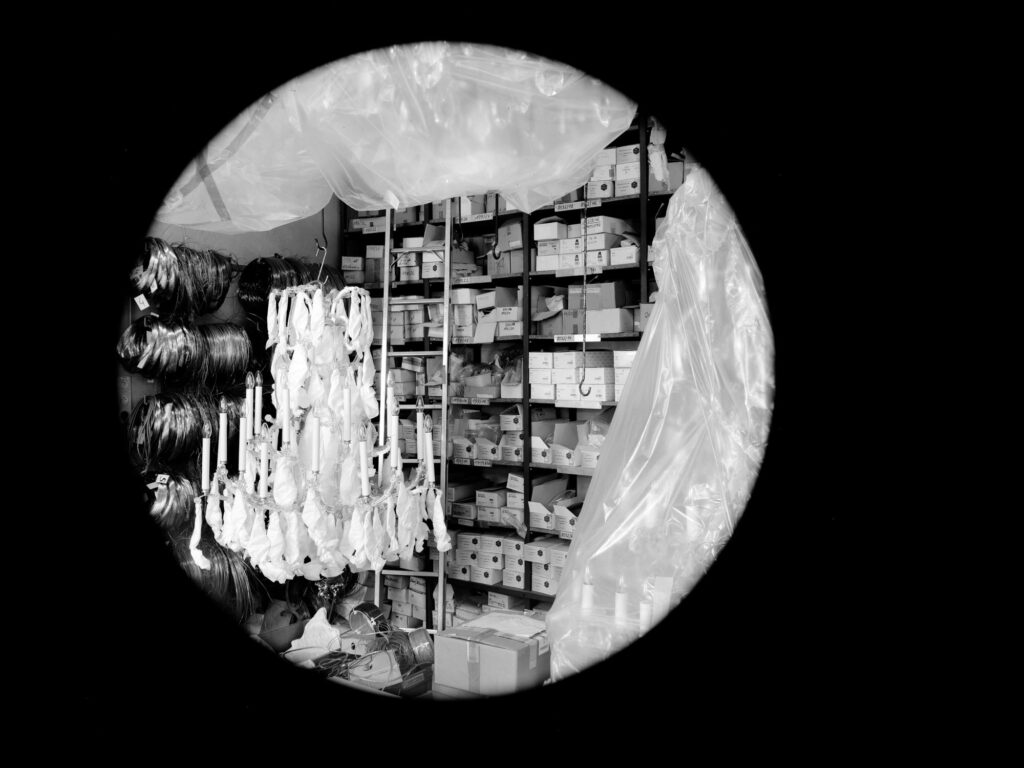
Im Kreis der Luster
aus dem Interview:
Was bei den Bildern auffällt: Sie drehen sich um die Luster, aber der Luster steht beziehungsweise hängt nicht im Mittelpunkt.
Ich erzähle mit diesen Bildern natürlich auch etwas über die Innenräume beziehungsweise man benutzt diese Innenräume, um kleine Geschichten zu erzählen. Es basiert alles nur auf Andeutungen, vieles ist nur angeschnitten. Der Luster ist, wenn man so will, der rote Faden, der sich durch die Erzählungen zieht.
https://blog.meisterstrasse.com/2018/10/12/fotograf-wolfgang-thaler-interview-lobmeyr-luster/
Ausstellung in den Schauräumen von J. & L. Lobmeyr, Salesianergasse 9, 1030 Wien
bis zumindest 22.11.2018
https://diepresse.com/home/schaufenster/design/5517677/Fotoprojekt_Wolfgang-Thalers-PrivatLusterSammlung?from=suche.intern.portal
from the interview:
What is striking about the pictures is that they revolve around the chandeliers, but the chandelier is not the centre of attention.
Of course, I also tell something about the interiors with these pictures, or rather these interiors are used to tell little stories. It’s all just based on hints, a lot of things are just cut in. The chandelier is, if you like, the common thread that runs through the stories.

